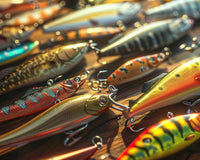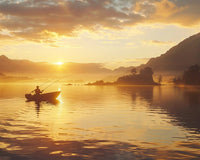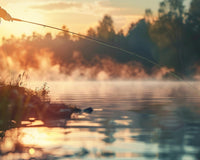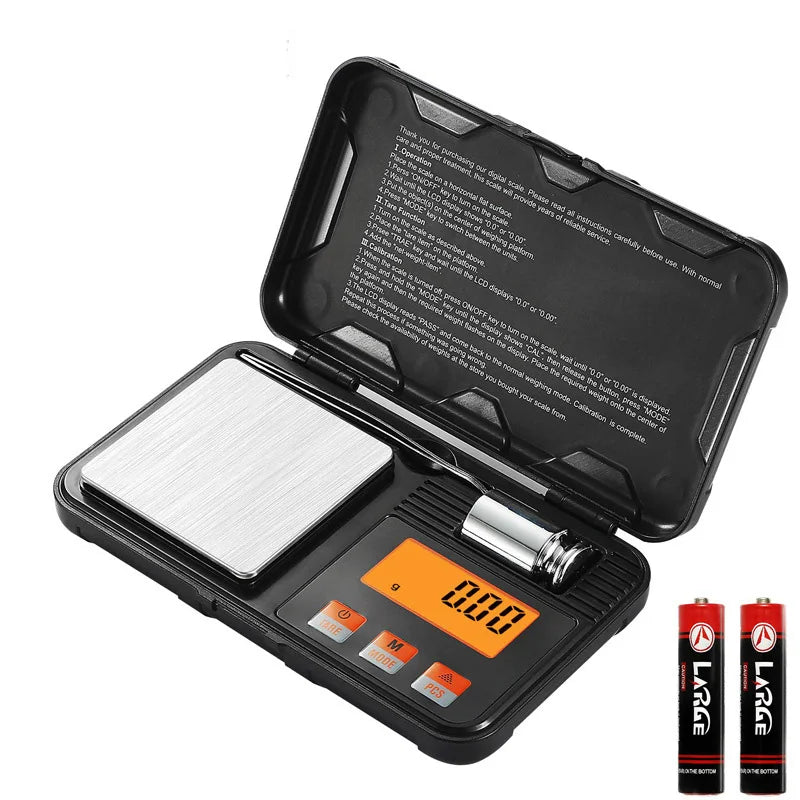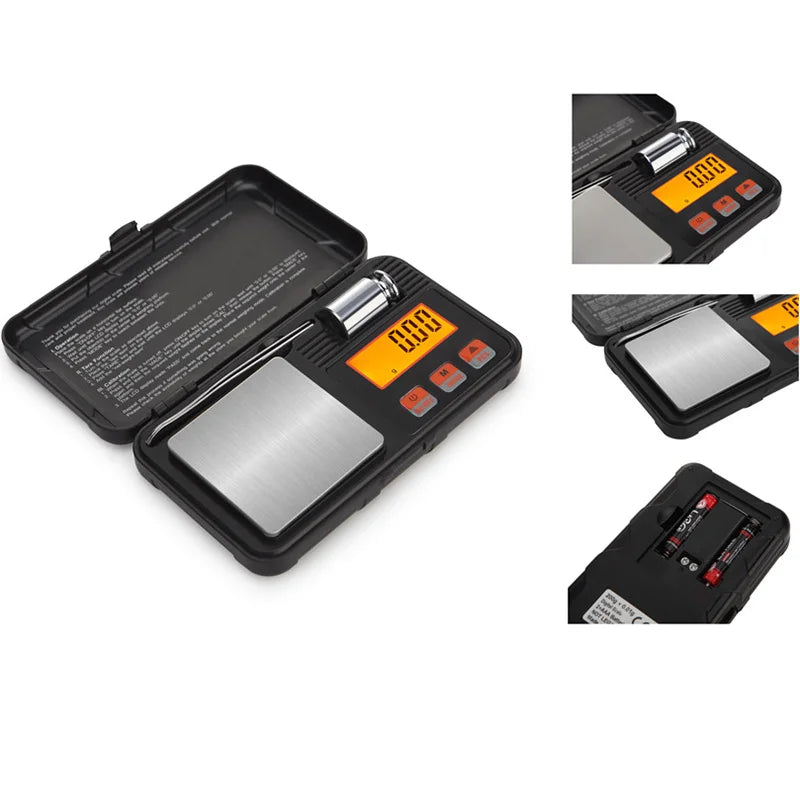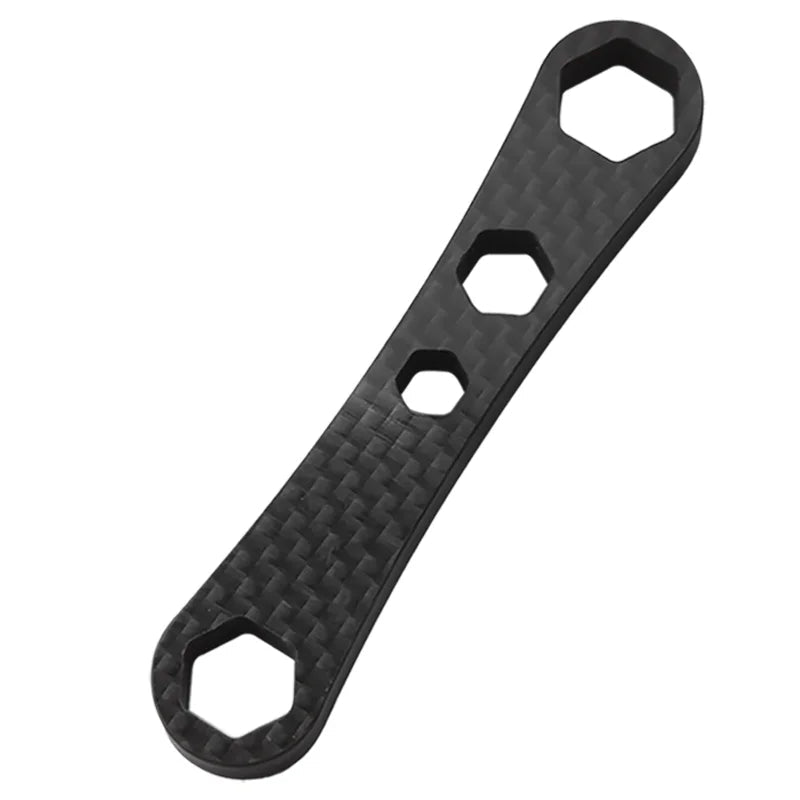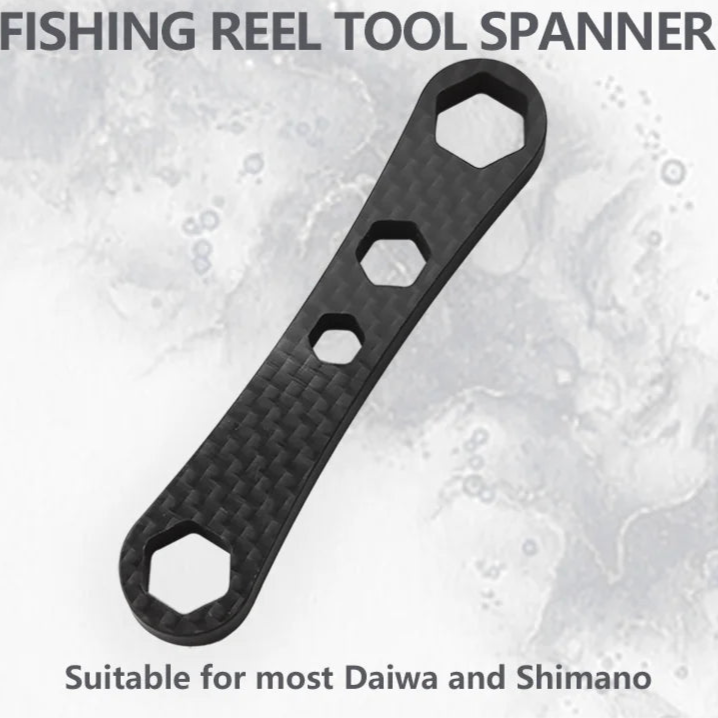In New Zealand, there’s a growing trend bringing together two outdoor passions: cycling and fishing. Known as bike fishing, it’s a perfect blend of fitness, nature, and adventure. Whether you're pedalling through forest trails or coasting along riverside roads, this approach lets you reach hidden fishing spots while enjoying the journey. It's low-impact, affordable, and offers a great way to unplug and reconnect with the outdoors.
What is Bike Fishing?
Bike fishing is the practice of cycling to fishing locations, often using specialised gear to carry rods, tackle, and supplies. Unlike driving, riding allows access to off-the-beaten-track spots that vehicles can't reach. You can explore riverbanks, gravel paths, or forest trails with minimal gear and maximum freedom. It’s especially popular among bikepacking and bike touring fans who want to combine cycling with angling. The appeal lies in its flexibility: you can go for a short ride after work or plan a weekend-long expedition through remote backcountry areas.
Why Combine Cycling and Fishing?
Merging these two activities makes sense for anyone who enjoys exploring the outdoors. It saves petrol, reduces your environmental footprint, and improves your fitness. Plus, many of New Zealand’s top fishing areas are surrounded by scenic trails. By bringing your rod on the ride, you can fish in peace away from the crowds, whether you're chasing trout in the South Island or exploring estuaries up north. There’s also something incredibly satisfying about earning your catch through your own pedal power.
Choosing the Right Ride for Your Adventure
Your choice of wheels matters. The terrain, distance, and how much gear you plan to carry will all influence your decision.
Road vs. Mountain Setups
If you’re sticking to sealed roads or light gravel paths, a road setup might suffice. But for most Kiwi conditions, a mountain or hybrid design is best. These can handle rough trails, steep climbs, and muddy tracks. For longer journeys, touring bikes with wider tyres and better cargo support work well. Adventure gravel bikes are another great option, offering a balance between speed and off-road ability.
Essential Features for Fishing Trips
Look for frames with mounting points, durable wheels, and a comfortable saddle. Disc brakes give better control in wet weather. A lighter frame makes handling easier, especially when fully loaded. Suspension forks are helpful on rocky terrain but not essential for shorter rides. Gearing should suit your fitness level and the types of trails you’ll face. If you're planning overnight trips, make sure there’s room to mount racks and bags securely.
Packing Your Gear
Organisation is key when prepping for a fishing day on two wheels. Space is limited, so pack light and smart.
Storage Options
Start with pannier bags for bulkier gear and a handlebar bag for essentials you’ll need on the move. A phone holder with a clear window is handy for maps and tracking, while a waterproof saddle bag keeps tools and kits dry. Frame bags are great for storing heavier items close to your centre of gravity. A top tube bag can hold snacks or small accessories.
Fishing Gear Essentials
Keep your setup minimal. A compact travel rod that folds or collapses is ideal. Look for models that include a carry case and pair them with a small spinning reel. Only bring the tackle and lures needed for your target species. A small lure box and net that straps to your pannier are practical options. Consider soft plastics and spinnerbaits—they’re versatile and take up little space. If you’re targeting rivers, floating line and small dry flies can be easily stored in a compact case.
Accessories for Easy Access
Use a handlebar bag for snacks, maps, sunglasses, or a small camera. A saddle bag can store tools like a cable puller or a spare brake sensor. Spreading weight across your gear will keep things balanced and comfortable. Don’t forget a small dry bag for valuables like your phone, ID, and fishing licence. Some riders also attach a cup holder for water bottles or portable coffee flasks.
Safety First
Exploring remote trails means being prepared for anything.
Protection and Visibility
A lightweight cover protects your ride from mud and rain during stops. Strong lighting is vital—use a front lamp and a bright tail light if you're travelling in low light. Reflective strips on your clothing and gear improve visibility in changing conditions.
Lighting Setup
Choose USB-rechargeable lights with long-lasting batteries. Look for options that brighten when braking. Clear visibility improves safety on trails and roads. Many lights now include side illumination or flashing patterns to catch attention from all angles.
Cycling Wear for Comfort and Safety
Goggles shield your eyes from glare, wind, and bugs. A breathable cap helps with sun protection and sweat. Together, they keep you focused and protected throughout your trip. Layer up with base layers and moisture-wicking tops. Gloves reduce vibration from handlebars and improve grip when casting or reeling in.
The Complete Setup
Great trips start with solid planning and the right gear.
Tools and Repairs
Bring a compact multi-tool with hex keys, screwdrivers, and a chain breaker. Include a tyre repair kit with levers, pump, and patches. For disc brake users, a torque wrench ensures safe adjustments. A spare inner tube and a tyre boot can be lifesavers on remote tracks.
Mini Fixes
A small ratchet and cable puller are useful for quick tweaks. Store them in a saddle pouch or pannier pocket. Include spare chain links, a small bottle of lube, and zip ties—they take up little space but can solve big problems.
Gear for Changing Weather
NZ’s weather can shift fast. Pack arm warmers and a face mask for cold mornings. A buff or scarf helps with sun and wind protection. Waterproof outer layers should be compact enough to stow when not in use. Consider insulated socks and shoe covers if riding during cooler seasons.
Planning Your Route
Choosing the right path makes all the difference. New Zealand has many trails near prime fishing locations.
Top Trails for Combined Adventures
Try the Otago Central Rail Trail for river access, or the Timber Trail in the North Island for bush-clad streams. Lake Dunstan and Lake Taupō also feature nearby paths and top angling spots. If you’re staying overnight, carry a lightweight tent that fits in your pannier or frame bag. Many trails offer campsites, perfect for cooking, resting, and watching the stars. You might also find Department of Conservation huts near popular tracks, which are a good fallback in poor weather.
Tips for Getting Started
Use NZ cycling maps and local fishing resources to find ideal spots. Look for camping areas along the way. Travel light but pack essentials like a first-aid kit, repair tools, and plenty of water. Let someone know your route if heading into remote areas. Apps like Trailforks or Komoot can help plan routes and download maps for offline use. Always check local fishing regulations and carry the appropriate permits.
Final Thoughts
This isn’t just a trend—it’s a new way to enjoy the wild. You don’t need to be a seasoned angler or expert rider. With a reliable setup, a compact rod, and a smart plan, anyone can enjoy peaceful fishing in places others can’t reach. Whether it’s a multi-day trail or a short trip to the local stream, combining pedal power with angling opens up a whole new world. Pack smart, ride safe, and see where the trail leads. Let nature set the pace—and let your next big catch be the reward for the journey.
At HOOK LINE SINKER, we offer high-quality BIKE BAGS, BEACONS & LIGHTS, BASE LAYERS, HATS & GAITERS, SOCKS, SUNGLASSES, TRAVEL RODS, MULTI-TOOLS, TENTS, WATER CONTAINERS, REPAIR KITS and CAMP BEDDING for your Bike Fishing needs.
Happy Fishing! 🎣



